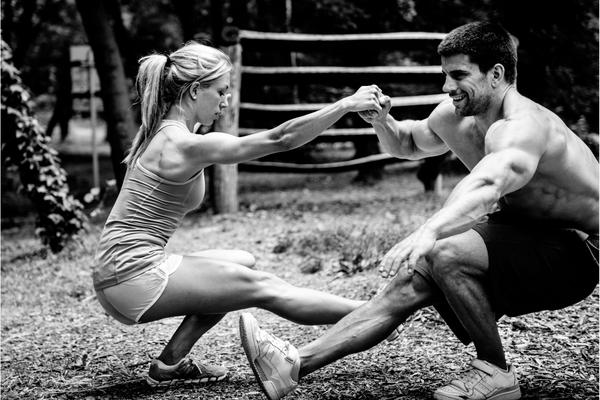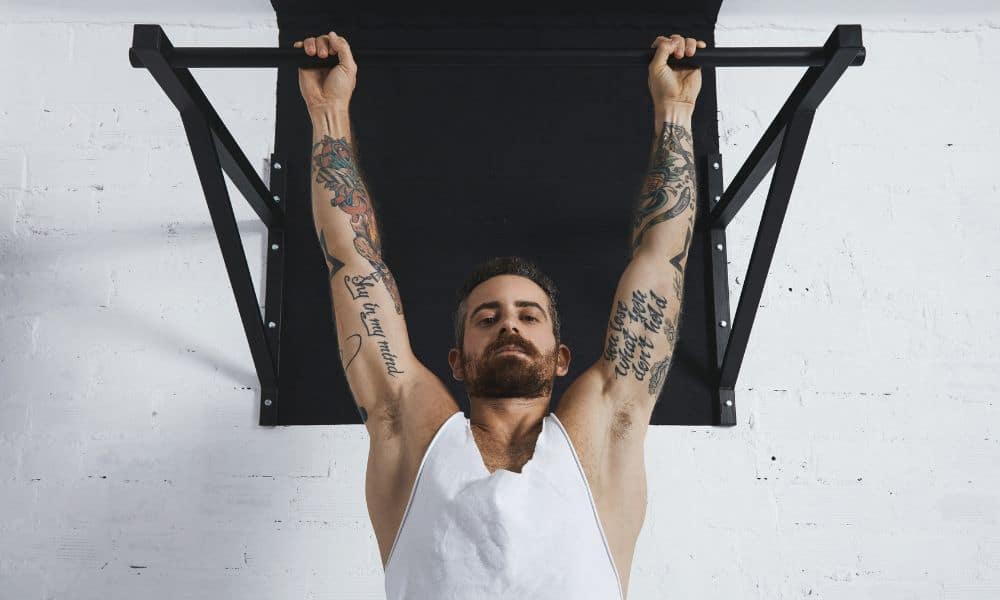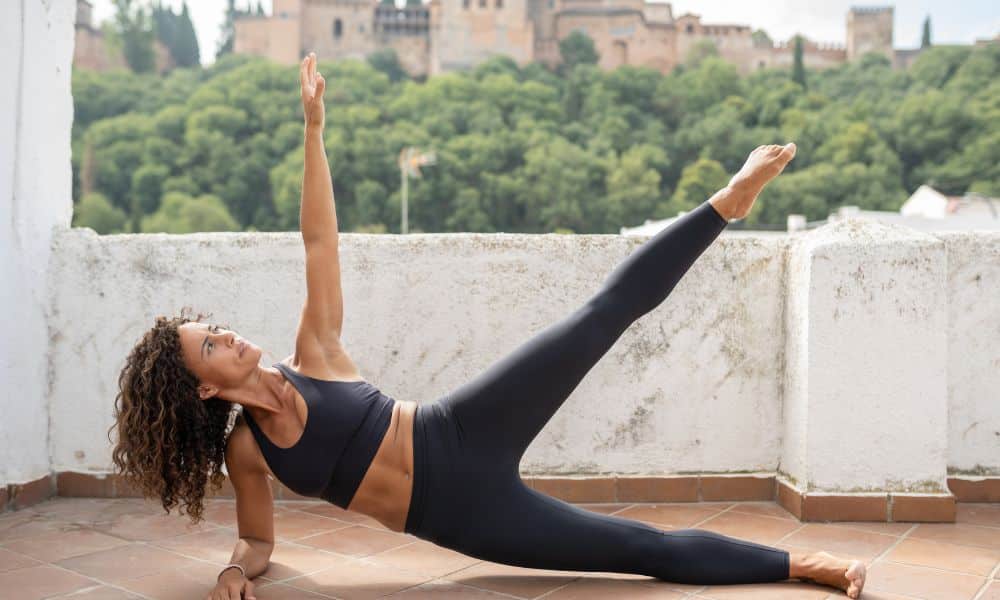The pistol squat is a challenging exercise that targets your entire lower body. If you’ve never tried it before, it’s best to start with a few variations of the basic pistol squat and work up to the regular pistol squat over time. Here’s how:
Pistol Squat- What Is It?
A pistol squat is a one-legged squat. It’s also known as a one-legged squat or single-leg squat.
The difference between a pistol and a regular squat is that you stand on one foot instead of two legs. You can think of it as sitting on your heels without weight on them: you’re balancing on one leg, with your other leg stretched out behind you for support. The goal is to ensure that no part of your foot touches the ground during this exercise –keeping your toes pointed toward the sky! In terms of benefits, here are some reasons why we think they’re so awesome:
- They make us feel strong! It takes more strength than most people realize to hold yourself up with just one leg –pistol squats are an excellent way to build muscle mass and improve balance (and prevent falling over).
- They help with flexibility! Because these exercises require full extension of both hips before moving into the next phase (eccentric), they’ll teach intermediate athletes how to move their bodies correctly and control their movements so as not to overextend themselves while still getting maximum benefit. From each repetition.”
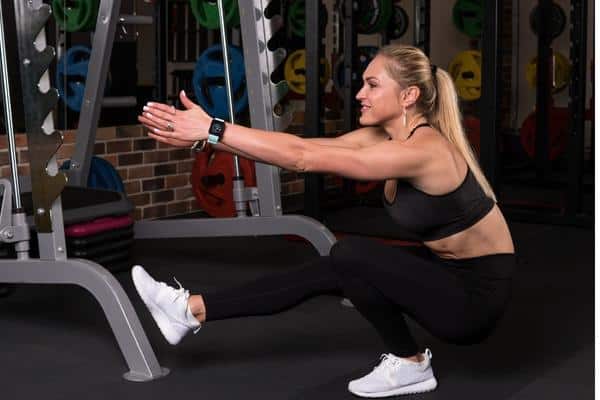
Pistol Squat Exercise- How To Do It?
The pistol squat is also known as the one-legged squat. It involves standing on one leg and lowering yourself until your butt touches the ground, then pushing yourself back to a standing position.
It may seem easy, but it’s challenging to do correctly—even for experienced athletes! When first learning how to do a pistol squat, you’ll likely make common mistakes that can lead to injury if not corrected early on in your training.
Pistol Squat Progression For Beginners
If you’re new to pistol squats, a bench or chair is the best way to get started.
- Sitting on a low bench: Begin by standing with your feet hip-width apart. Lift one foot and place it on top of the seat of a bench or chair in front of you, so it’s parallel to your other leg. Hold this position for 30 seconds before switching legs and repeating for as many reps as possible within that period.
- Performing pistol squats without assistance: Once you’ve mastered sitting on a bench or chair for 30 seconds per set, start working toward performing pistol squats without any help from an object like these two bodyweight exercises:
- Rack Pulls – Stand inside a squat rack holding a barbell over your shoulders (you should be gripping the barbell with hands slightly wider than shoulder-width apart). Step out from the rack, so arms extend straight down towards the floor but do not let weight touch down; raise barley overhead by extending arms upwards until arms are fully extended above the head; lower weight back down slowly into starting position until arms are once again extended downwards towards the floor.
Tips To Master The Regular Pistol Squat
- Use a box or bench to help with balance. This will feel counterintuitive, but if you’re struggling to keep your balance while doing the pistol squat, try placing your feet on an elevated surface like a box or bench. The higher you are, the easier it will be to make this move correctly and safely.
- Get assistance from a spotter. If you’re working with a friend who knows how to do the pistol squat well and can assist you in executing it correctly, that’s great! Having someone nearby who can help guide your form is always helpful when learning new movements—especially if they have any experience with this particular exercise!
- Practice in front of a mirror. One way for beginners who want to master their pistol squats is by videotaping their first few attempts at them (or better yet, having someone else videotape them) and watching how closely their form matches those demonstrated by more experienced practitioners of this exercise before attempting it again without assistance from others around them.
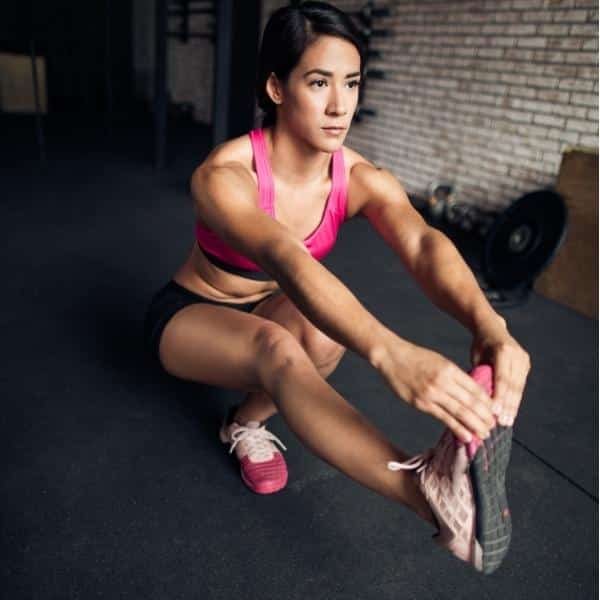
Benefits Of Doing The Pistol Squat
The pistol squat is a powerful exercise that targets muscles in the lower body and can help improve your overall posture. It can also be used as part of a conditioning routine or add variety to your training.
The pistol squat isn’t for everyone, but if you want to give it a go, here are some tips on how to do it right:
Improves ankle joint mobility
It’s also important to note that improving ankle joint mobility doesn’t only mean that you can move your ankles further and have more control over them.
This is because improved ankle joint mobility provides better strength, flexibility, and balance. This means less injury when doing other movements or daily tasks like walking upstairs or running errands around town.
It prevents lower body injuries caused by muscular imbalances
Pistol squats are one of the best exercises to strengthen your legs, especially the quadriceps. But they also work your glutes, hamstrings, and calves.
They help prevent lower body injuries caused by muscular imbalances (tight hip flexors/weak quads). They help prevent knee injuries by strengthening the tendons around the knee joint.
And they help prevent ankle sprains by strengthening both ankles at once—a massive benefit for those who suffer from weak ankles!
Correct any leg strength imbalances
A pistol squat requires a lot of flexibility in your hips and core to execute it properly. It also helps improve posture, body awareness, and athleticism since it requires coordination between multiple muscle groups to execute it correctly. In addition, pistol squats may even increase mental health by improving self-confidence, as they require a lot of perseverance because they’re pretty challenging at first glance.
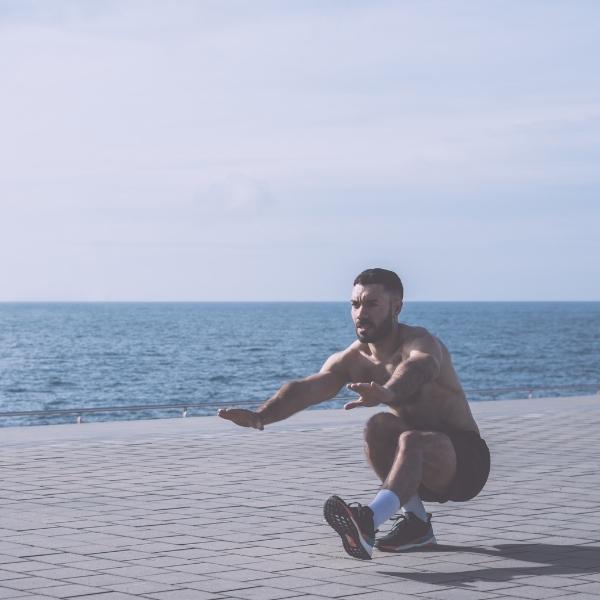
Increases full-body balance
The pistol squat is an excellent exercise for improving overall balance and coordination. As you balance one leg, your core is engaged to help stabilize the rest of your body. This improves your strength and power and can help prevent injuries during other exercises.
Builds strength along the back of the body
If you want to build strength, focus on the back of your body. The squat is a great exercise to help target these muscles, primarily because it simultaneously uses both legs and arms. As far as movements go, it offers benefits beyond just strengthening one area of the body—the squat will also help build endurance in your core and upper body due to how you need to hold yourself up during the exercise.
Recruits and works the core muscles
The core comprises the muscles of your trunk, which includes your abdomen, lower back, and hips. The core helps stabilize the spine and pelvis during movement so that you can safely lift weights or perform athletic movements like throwing a baseball or punching someone in the face. When you do a pistol squat, you’re also working your upper body muscles: as you extend one leg back and keep it straight while lowering yourself into the squat position, you use most of your arm strength to support yourself on one leg (and sometimes only one arm).
The squat pistol recruits many different muscle groups at once—from those in your lower body to those in your upper body—so when done correctly, it’s an effective way to strengthen all sides of your body.
The Final Word on the Pistol Squat
Mastering the pistol squat is an excellent way to improve your overall strength and balance. It requires you to use all of your muscles evenly, but it also helps prevent injuries in areas where you might have imbalances in strength or flexibility. If you want to know how this exercise can benefit your body, check out our guide on how it works!

